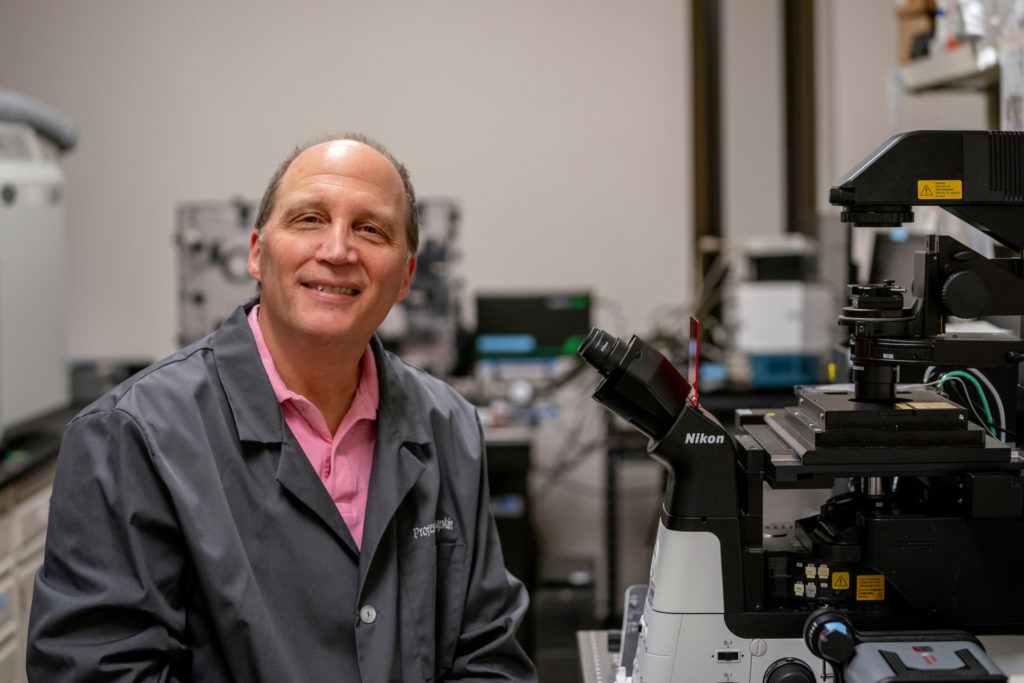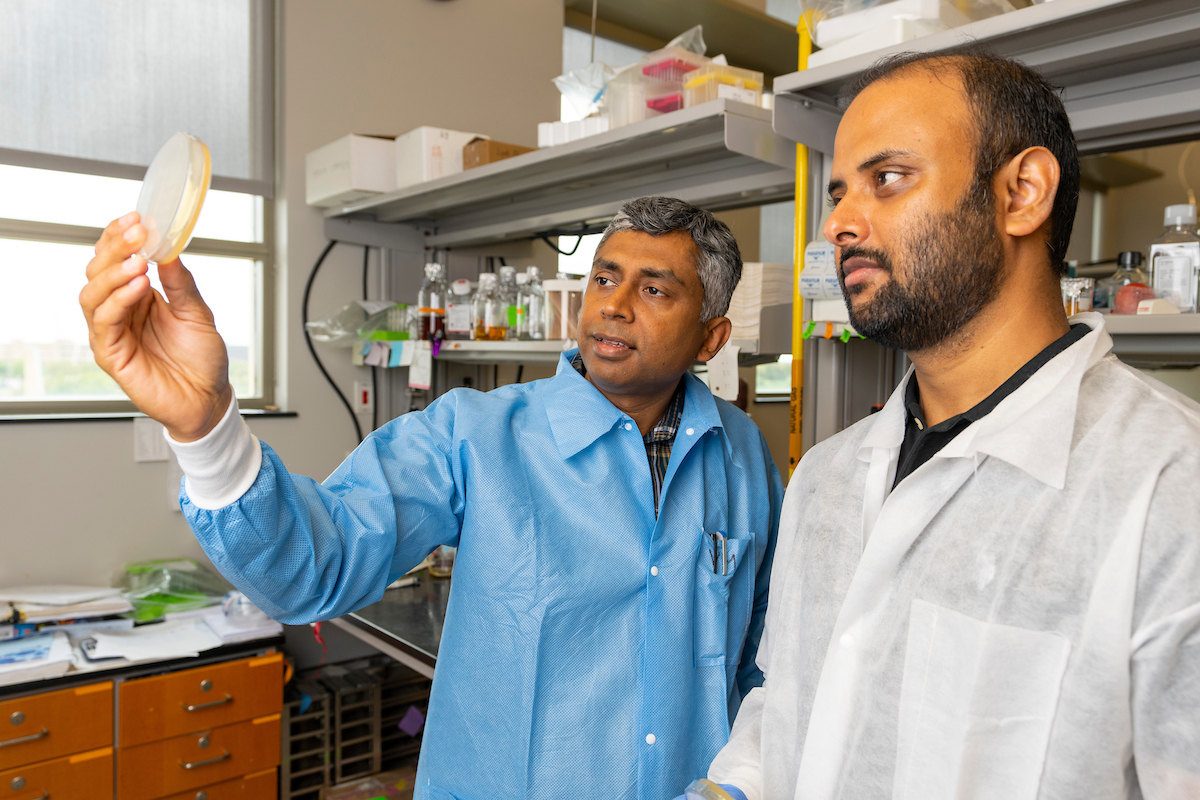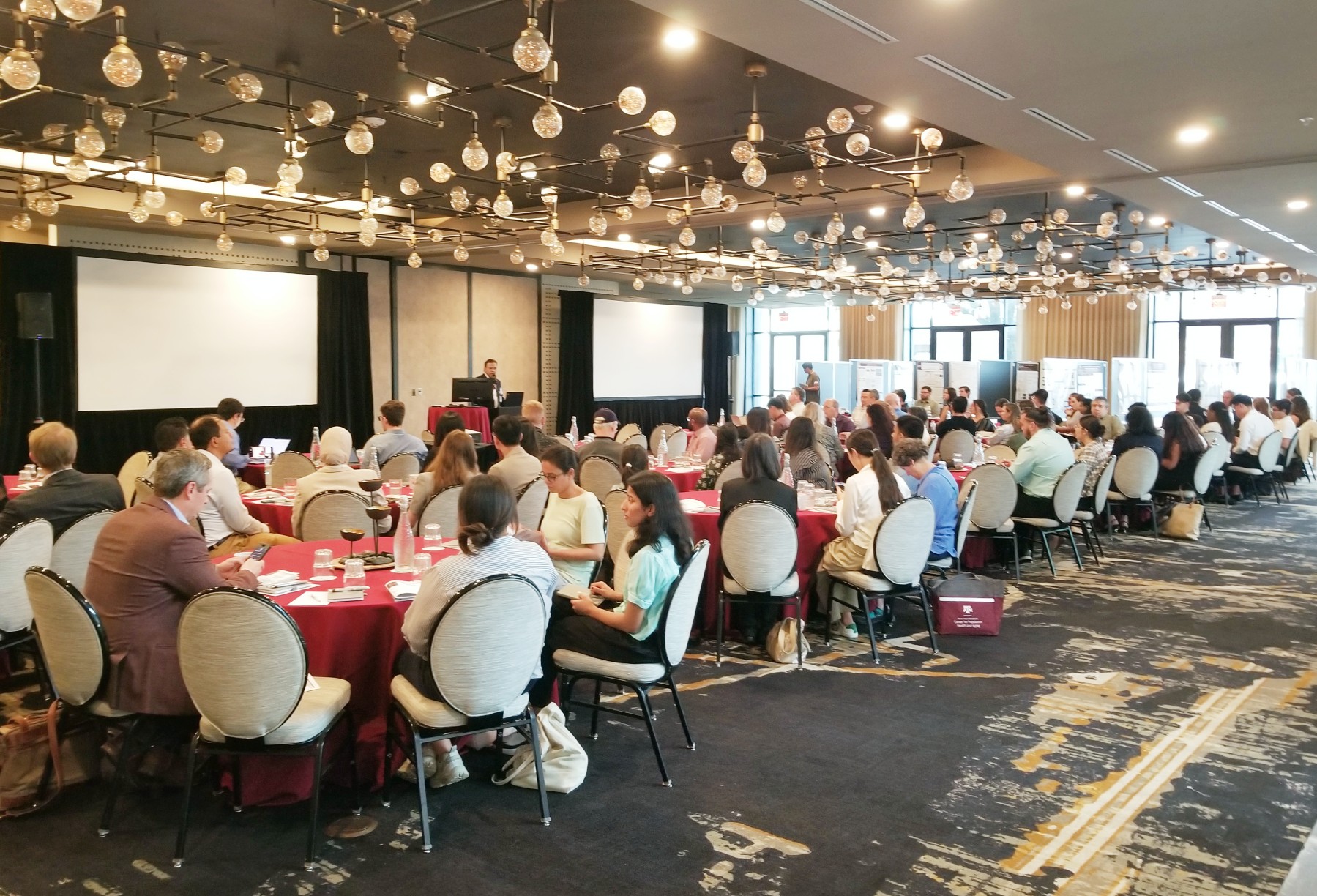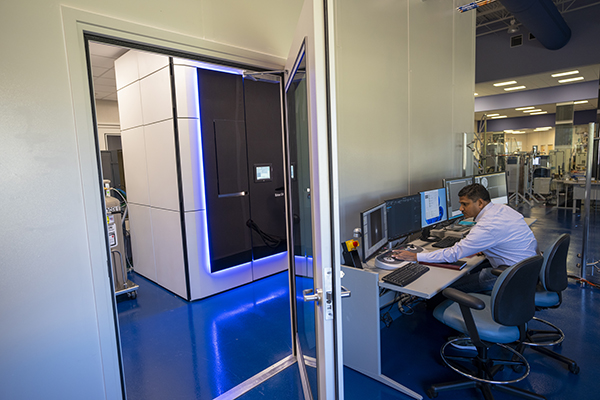Texas A&M researchers to further develop unique cancer drug with $2.3 million grant
Unique compounds kill tumors and rejuvenate immune systems exhausted in response to cancer
A team of Texas A&M University researchers has received a $2.3-millon grant from the National Institutes of Health to explore further a unique immunotherapy that could be the first of its kind to treat colon cancer and could also hold the key to treating other forms of cancer.

The collaborative, four-year project will determine how to best utilize a new class of drugs developed in the laboratory of Stephen Safe, Ph.D., Distinguished Professor in the Texas A&M School of Veterinary Medicine and Biomedical Sciences, VMBS, Department of Veterinary Physiology and Pharmacology. The discovery was made while also exploring the effects of their compounds on human and rodent cancer cells.
In addition to Safe, the team includes VMBS researchers Gus Wright, Ph.D., associate research scientist in the Department of Veterinary Pathobiology, and James Cai, Ph.D., associate professor in the Department of Veterinary Integrative Biosciences.; as well as Robert Chapkin, Ph.D., Distinguished Professor and Allen Endowed Chair in the College of Agriculture and Life Sciences Department of Nutrition and Department of Biochemistry and Biophysics, and Houston Methodist Hospital oncologist Maen Abdelrahim, M.D., who is co-principal investigator on the project.
Preliminary data pinpoints promising compounds
Safe’s compounds target two receptors — NR4A1 and NR4A2 — normally responsible for helping humans and animals lower stress levels but are too active in colon cancer and other solid tumors.
“In the case of solid tumors, these two receptors are bad; they regulate the growth of a cell and how it metastasizes, invades and survives,” Safe said. “When we screened these receptors, we found that the compounds we’ve worked on over the years bind strongly. Binding can sometimes be bad, making the tumor worse, or it can be good by being an antagonist. In this case, when compounds are antagonists—they wipe out the tumor.”
Not only does the team’s preliminary data indicate that their compounds act as an immunotherapy and kill the tumor, but the compounds also rejuvenate the immune system, which becomes exhausted as it responds to cancer.
“Immune cells play a very important role in cancer treatment,” Safe said. “But what happens with tumor development is that eventually, the immune cells just get exhausted and become unable to mount a ‘tumor-killing’ response.”
Tumors can suppress immune cells, especially T-cells, which target specific foreign particles such as cancer cells, and the tumors are misidentified as immune cells by the immune system, Safe said.
Some immunotherapies work by separating the T-cells from the tumor, allowing the immune system to destroy the tumor the way it would any other infection in your body.
By isolating the immune cells, Wright was able to analyze the T-cells for markers of exhaustion and determine that with Safe’s compounds, those markers were “wiped out.”
“Previous studies showed that NR4A1 played a role in T-cell exhaustion, and our unique NR4A1 antagonists not only target NR4A1 in the tumor but also in T-cells. This dual targeting — the killing of the tumor and rejuvenating the immune system — is consistent with their high anticancer activity in mouse models.”
The next steps
In the next phase of their research, the team will use the NIH grant to explore other areas of how the compounds work and, hopefully, prepare them for clinical trials.

While Safe works to “maximize” the compounds — that is, to select the most effective molecules for achieving their end goal — and to assess compound dosages, Abdelrahim will examine the effects of the compound on human tissue. Wright will work to explore implications on the immune system further, and Cai will investigate how other individual cell types are affected by the compounds. Chapkin will further analyze the effects of NR4A1-targeting compounds on colonic epithelial stem cells in tumors.
Chapkin, Wright and Cai will also perform a single-cell multiomic analysis of the colon tumor microenvironment. This work will probe in detail how NR4A1 affects T-cell exhaustion.
Ultimately, Safe believes their NR4A1-targeting drugs could also mitigate other types of cancer, including breast cancer, glioblastoma and rhabdomyosarcoma, which affects children.
“A lot of drugs that oncologists use now just target the specific genes and signaling pathways in tumor cells,” he said. “Those drugs are effective and inhibit some tumor growth, but they only target the tumor; they’re not targeting immune cells. I’m not sure how many drugs currently being used target both the tumor and the immune cells, but ours do, and this accounts for their potency in preclinical animal models.”
Story written by Jennifer Gauntt, School of Veterinary Medicine and Biomedical Sciences, and originally published at https://vetmed.tamu.edu/news/press-releases/cancer-drug-nih-grant/.





